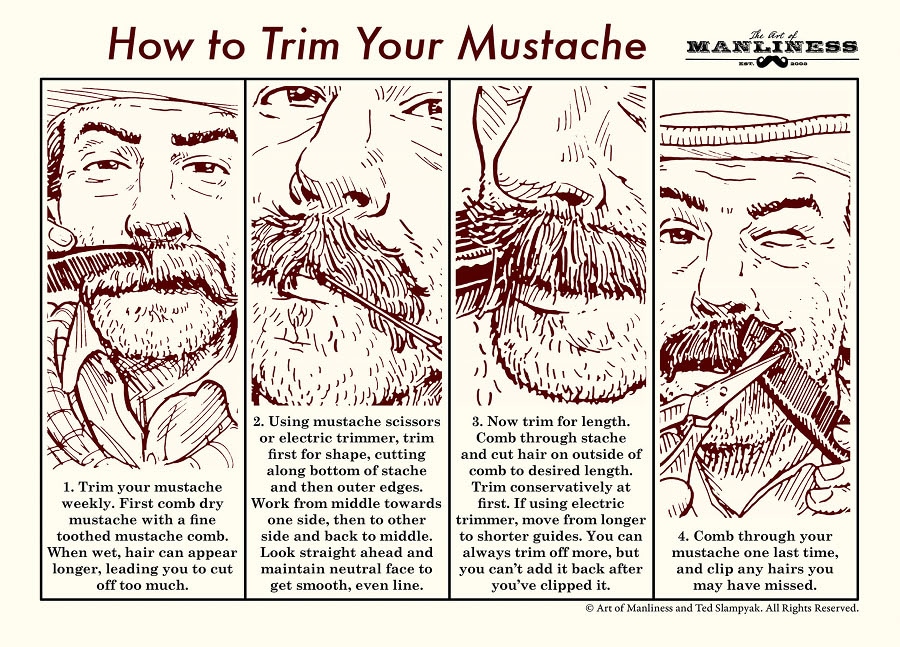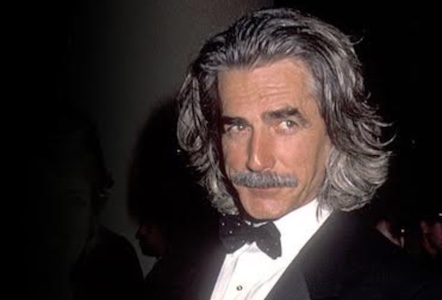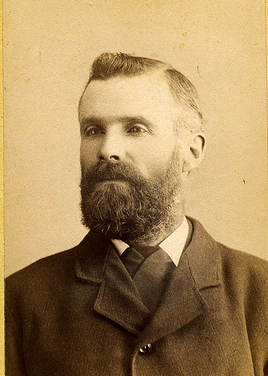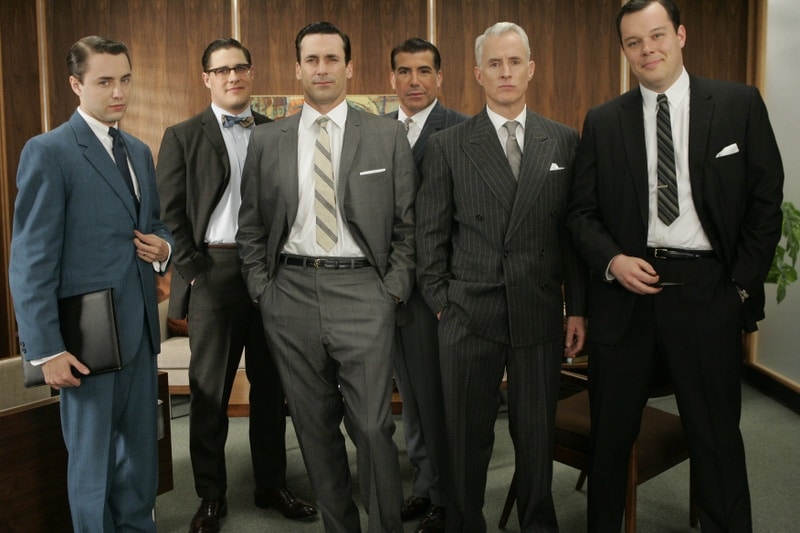
Since growing my hair to Sam Elliot length, I’ve had to think more about my mane. That’s the biggest downside of having longer hair: it requires more upkeep. For starters, it takes longer to dry. When I had short hair, I’d quickly run a towel through it and get on with my day. Now I’ve got to really squeeze the excess water out and even learned how to wrap a towel around my head like ladies and Ferris Bueller do so it can dry while I perform my other human maintenance tasks.
It also seems like there are more opportunities for my hair to look terrible now that it’s longer. The thing I have to battle the most is what my family describes as my hair’s inherent “poofiness.” If I don’t tend to my hair, I end up looking like Albert Einstein. In fact, on a recent road trip, I walked into a gas station in the middle of nowhere along I-40, and the hillbilly clerk behind the counter exclaimed, “Man, bro! You look just like ol’ Albert Einstein! Damn!”
To counter my poofy, Einstein-esque hair, I’ve had to learn about and start using a product I’d been aware of my entire life, but never actually understood: conditioner. Even if your hair isn’t as long as mine, you’d likely also benefit from learning about this oft-ignored step in one’s grooming routine.
What Is Hair Conditioner?
Up until this point in my life, the extent of my knowledge about conditioner was gleaned from watching TV commercials for the product. I vaguely understood that it “nourished” hair and made it look healthier.
I also knew that some of the shampoos I had once used had conditioner in them, like Pert Plus and Head & Shoulders 2-in-1.
Since adopting longer hair, I’ve come to a better appreciation of conditioner.
The best way to think of conditioner is as lotion for your hair.
Just as lotion makes your skin smooth, moist, and healthy-looking, conditioner does the same for your hair.
When your hair is dry, it tends to look frizzy and feathery. In my case, when my hair is dry, it poofs out like Albert Einstein, causing gas station clerks on I-40 to chortle at me.
What dries out hair? Shampooing is the biggest culprit. When you shampoo your hair, you strip your hair of its natural oils. My hair looks the poofiest after I wash it.
Sun, chlorine, and saltwater are other factors that can dry out hair, so living the Salt Life or Lake Life can mess with your mane. If you live in a dry climate, your hair will naturally be drier. Drying your hair with a blow dryer can dry your hair out as well.
Gray hair is also drier hair. When your hair grays, it loses some of its natural oils. It tends to be frizzy and wiry. This is likely the biggest contributing factor to my Albert Einstein poof. I’m mostly a silver fox now.
Conditioners battle dryness, frizz, and potential poofiness by coating your hair with oils, silicones, and emollients that hydrate and make it appear smoother, shinier, and fuller. Conditioner also makes your hair easier to brush and comb.
Types of Hair Conditioners
When I realized I’d need to start using conditioner regularly, I went to the conditioner section of CVS, thinking I’d just grab the first conditioner I saw.
But thanks to capitalism, I discovered that there is a Darwinian diversity of conditioners to choose from, from rinse-out conditioners to leave-in conditioners. Then there are the shampoos that include conditioners in them. Could I just use that?
Here’s the breakdown of the most common types of conditioners that you’ll encounter and how they operate:
Rinse-out conditioner. This is the most common conditioner you’ll run into. You just apply it to your hair while in the shower, leaving it on for a few minutes before rinsing out. The results are pretty much instant: your hair looks tamed and shinier. If you’re looking to start using a hair conditioner, look for the rinse-out variety, as it’s the easiest to use.
Leave-in conditioner. As the name suggests, a leave-in conditioner is a conditioner that you leave in your hair. Rather than applying it in the shower and rinsing it out, you put it in your hair after you get out of the shower and before you style your hair. Leave-in conditioner traps moisture in your hair and keeps it looking healthy all day. It’s really like putting lotion in your hair.
Leave-in conditioner comes in two types: spray and cream. The spray is easier to apply and disperses in your hair more readily. The cream kind is heavier on the oil than the spray, so it really makes your hair feel shiny and supple. The downside of the cream is that it takes more work to distribute it through your hair evenly, and depending on your hair type, it can make it look greasy and weighed-down.
Leave-in products also have a greater chance of causing breakouts; the oils and emollients can migrate from your hair to your skin, especially as you sweat, clogging your pores. (While leave-in products are more apt to cause breakouts, all hair products, even the ones you rinse out, can potentially trigger acne. If you notice that you’re breaking out along the outer rim of your face/along your hairline, your shampoo and/or conditioner may be to blame. Try mixing up the products you use.)
Shampoo+conditioner. You’ve likely used a 2-in-1 shampoo and conditioner at some point in your life. A lot of shampoos marketed to dudes are 2-in-1. Dudes like convenience, and what’s more convenient than turning two steps into one? But do these combo products actually condition your hair?
Kind of.
When you wash your hair with a shampoo+conditioner, you don’t give your hair enough time to soak the latter component in; you’re essentially washing the conditioner out as you apply it. You might have a bit less frizz using a 2-in-1 compared to using shampoo alone, but it’s not going to give you that shiny and full look compared to using a straight-up conditioner.
If you’ve got shorter hair, you can probably get away with using a 2-in-1. If you’ve got long hair that tends to frizz and get poofy, you’ll need to use a straight conditioner by itself.
Keep in mind that all conditioners vary in the heaviness of their conditioning. Those with dry hair will want something more hydrating; those with greasier hair will want something lighter. If your hair is thin/thinning, look for a volumizing conditioner, which will add more fullness.
How to Use Hair Conditioner
Wash your hair less frequently. Your hair has great natural conditioners that it comes by organically. Applying manufactured conditioner becomes more necessary once you strip these natural oils away by washing your hair with shampoo. So don’t shampoo your hair too much — you can probably get away with washing it less frequently than you currently do.
What if you’re someone who gets sweaty on the daily, needs a daily shower, and finds that shampooing makes your hair too dry, while simply rinsing it with water doesn’t quite remove its funk? Here’s a pro tip: Try “washing” your hair with conditioner. Put a big blob of conditioner in your hand and work it through your hair the way you would shampoo, massaging your fingertips into your scalp. Rinse out. This will remove the sweat-embedded salt and funk from your scalp/hair without stripping it of its natural oils. Return to a shampoo wash once your hair gets sufficiently greasy.
Use as needed. You probably don’t need to frequently apply a conditioner if you have shorter hair. Apply as needed when your hair is dry/frizzy. The product you put in your short hair to style it may act as a de facto leave-in conditioner.
If you have longer or drier hair, you may need to add conditioner daily. In my case, if I skip a day of putting conditioner in my hair, it starts looking poofy.
You’ll definitely want to apply conditioner after you shampoo your hair. Remember, shampooing strips your hair of its natural oils, leaving it looking dry and frizzy. Conditioner will restore your luscious mane after you’ve shampooed it.
The longer and thicker your hair, the more generous you need to be with the conditioner. If you’ve got a lot of hair, you’ll need a lot of conditioner to ensure you cover all its strands. More than you’d think. Most conditioner bottles say to use a quarter-sized dollop of conditioner. I’ve found that I need a half-dollar-sized amount or more.
Spread it evenly through your hair, focusing on the ends. You want to coat as much of your hair as possible with the conditioner, especially ensuring you get some on its ends. This will help reduce split ends and frizz.
Let it sit for about three minutes and then thoroughly rinse out. For rinse-out conditioners, you’ll want to let the conditioner sit in your hair for around three minutes (the longer, the better). I apply my conditioner first thing when I get in the shower (or right after I wash it on the days I shampoo). Then I clean my body while it sits in my hair. I let it sit for another minute or two (since washing my body only takes 60 seconds or so). Then I rinse it out as the last thing I do in the shower. If you’re prone to acne, wash your face after you rinse the conditioner to ensure you clean any residual conditioner from your skin.
Make sure to get all the conditioner out of your hair while in the shower. If you don’t, you’ll start getting a build-up of conditioner in your hair that will leave your hair looking dull and greasy, and could lead to breakouts.
If you don’t have a few minutes to let the conditioner sit, even working it through and immediately rinsing it out will smooth your hair some; it just won’t work as well as if you’d given it more time to soak in.
For leave-in conditioner, apply after you get out of the shower and before you style your hair. While your hair is still damp, apply your leave-in conditioner. Make sure it’s evenly distributed in your hair while focusing on the ends. After you’ve applied your leave-in conditioner, give your hair a good brushing to evenly distribute.
There you go. A dude’s guide to hair conditioner. No more poof; no more frizz; no more gas station clerks on I-40 saying you look like a mad scientist.







